Few phrases are as evocative as “tidal locking,” also known as 1:1 spin-orbit resonance. Put simply, this is the condition wherein the time it takes a world to rotate around its axis is the same as the time it takes to orbit its parent body once. Consequently, one side has a perpetual view of the world’s parent body, while the other side is always facing away from the parent body. The closest example to hand is our Moon, whose Earth-side face is very familiar to us and whose far side was unseen by humans until the advent of space probes.
Many authors have been fascinated by the phenomenon of tidal locking, which can set up some great plots. Take these five vintage examples.
“Parasite Planet” by Stanley G. Weinbaum (1935)
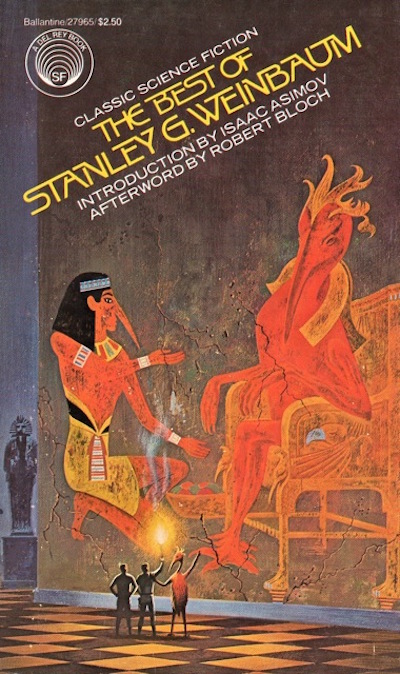
Although the region at the very center of tidally locked Venus’ sunward side is parched and lifeless, conditions in the Hotlands, closer to Venus’ twilight zone, are more conducive to life. Indeed, the region is so filled with exuberant species that visitors from comparatively chill, sparse Earth are hard-pressed to avoid being eaten by one or another of Venus’ ravenous lifeforms, whether animal, vegetable, or fungal.
Prudent humans remain far from Venus. Desperate people, like Hamilton “Ham” Hammond, seek fortunes there. As far as Patricia Burlingame is concerned, Ham is nothing but a trespassing poacher. How inconvenient, therefore, that circumstances should force the pair to cooperate for survival. Surely, once their dangerous journey over, the future Mr. and Mrs. Hammond will part ways, never to speak again.
Due to the difficulty of measuring Venus’ rotational period, there were a wide range of estimates available to SF authors concerning the length of the Venusian day. To my knowledge, nobody suggested that Venus’ sidereal rotation would be 243 Earth days, longer than Venus’ 224.7 Earth-day solar year. Venus’ synodic rotation period of 117 Earth days would be a fascinating detail to include in a story set on Venus. If only conditions there were not far more hostile to terrestrial life than Weinbaum could have envisioned.
“Brightside Crossing” by Alan E. Nourse (1956)
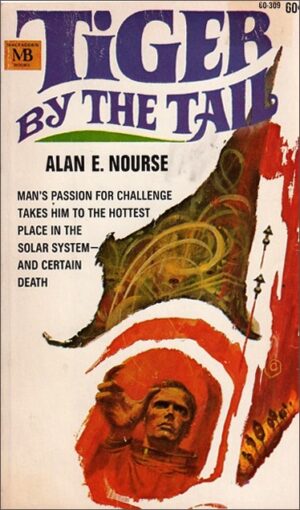
Mercury’s Brightside is a sunbaked desolation where lead flows like water. Brightside at Mercury’s perihelion, when Mercury is at its closest to the sun, is even hotter. Naturally the same sort of brave explorers who’ve left corpses scattered on Mount Everest would find Brightside irresistible. The fact that nobody has ever succeeded in crossing Brightside at perihelion only makes the prospect more tantalizing.
Peter Claney’s expedition failed like all the others. Unlike every other explorer who challenged the Brightside, however, Claney survived the attempt. Aware that James Baron is planning his own foray across the Brightside, Claney seeks Baron out. Claney hopes the story of his failed crossing will deter Baron and save lives…as though that would have worked had someone tried something similar on Claney himself.
Mercury was believed to have a 1:1 spin-orbit resonance until 1965, when radar observations revealed that the planet rotates three times for every two revolutions around the Sun. This 3:2 spin-orbit resonance is both very cool and something that instantly rendered obsolete a lot of old-time SF stories, such as this one.
Hothouse by Brian Aldiss (1962)
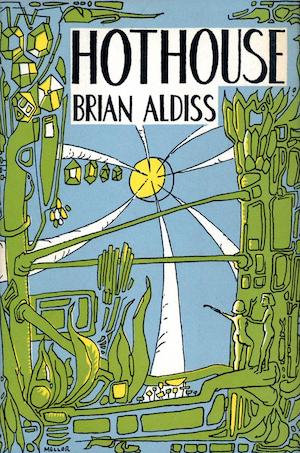
Over the eons, Earth slowed until one face was locked to the Sun. On that face, life thrives, although not human life. Unable to complete with the monstrously vibrant life that now dominates the Earth, humanity has been reduced to a small handful of perpetually-imperiled tasty survivors. Human extinction must be only a matter of time.
A devastating crisis convinces the elders to divide the tribe: The children will find their own way, unburdened by the old people. The ancients will “go up,” seeking the final fate of those who have lived too long. The humans could be forgiven for believing “go up” is just a fancy way of saying “wander off and get eaten politely out of sight.” The truth is far more bizarre.
Not only is the Earth tidally locked to the Sun but the Moon has retreated to a Lagrange point, where it enjoys a position so fixed with respect to the Earth that a vast network of vines links the worlds. It’s just possible that scientific plausibility was not Aldiss’ primary goal.
Day by Night by Tanith Lee (1980)
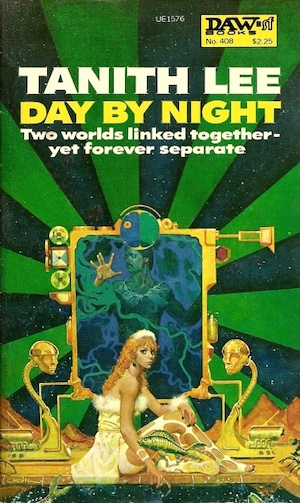
Vitro’s world has a single, parched hemisphere facing its sun, and a single frozen hemisphere facing away from its sun. Why anyone would colonize the world is unknown. Nevertheless, someone must have, for Vitro and her people live in fragile artificial habitats on the nightside.
The knowledge needed to repair the habitats is as lost as the planet’s history. When aristocrats’ “Residensias” break down, the inhabitants must appeal to fellow aristocrats for humiliating charity or worse, accept relegation to the slums. Aware that her own Residensia is dying, Vitro chooses a third option: frame rival aristocrat Casrus and appropriate his home. Too bad for Vitro that she formulated her cunning plan while lacking certain vital information about her world.
Lee has judiciously set her story on an unknown exoplanet, far, far away from the spying apparatus of story-spoiling astronomers. Thus, unlike some older stories I could name, science has not rendered this tale obsolete.
Four Hundred Billion Stars by Paul J. McAuley (1988)
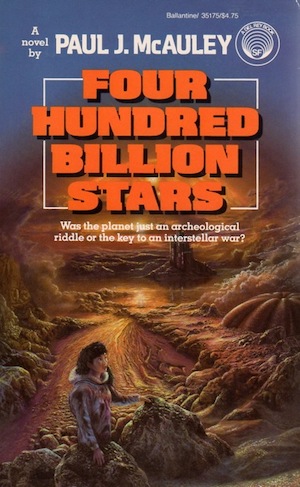
Eight light-years away from the war between humans and their alien enemy, a habitable world orbiting an obscure red dwarf presents an enigma. Simple math would deduce that the tidal forces working on the terrestrial world would lock it to its sun just as the Moon is locked to Earth. Observation reveals that this is not the case. A million years ago, someone or something increased the planet’s spin and introduced an ecosystem.
Proximity to the enemy is suggestive. Are the enemy and the beings who brought life to this formerly tidally locked world the same? Telepath Dorothy Yoshida is dispatched to the world to find out. Unravelling the secret history of the Milky Way will be an adventure, one from which many of Dorothy’s companions will not be returning.
Dorothy is on my list of characters with whom never to go camping.
Current models suggest that even a modest atmosphere would be enough to allow heat transport to keep all the volatiles from solidifying on the night side. I do not believe that was clear when this novel was written.
***
This is, of course, a very small sample of the stories I could have chosen. It may be that you have your own favourite thrilling tales of tidally locked worlds. If so, regale us with their titles in the comments, which are as ever below.
In the words of fanfiction author Musty181, four-time Hugo finalist, prolific book reviewer, and perennial Darwin Award nominee James Davis Nicoll “looks like a default mii with glasses.” His work has appeared in Interzone, Publishers Weekly and Romantic Times as well as on his own websites, James Nicoll Reviews (where he is assisted by editor Karen Lofstrom and web person Adrienne L. Travis) and the 2021, 2022, and 2023 Aurora Award finalist Young People Read Old SFF (where he is assisted by web person Adrienne L. Travis). His Patreon can be found here.










